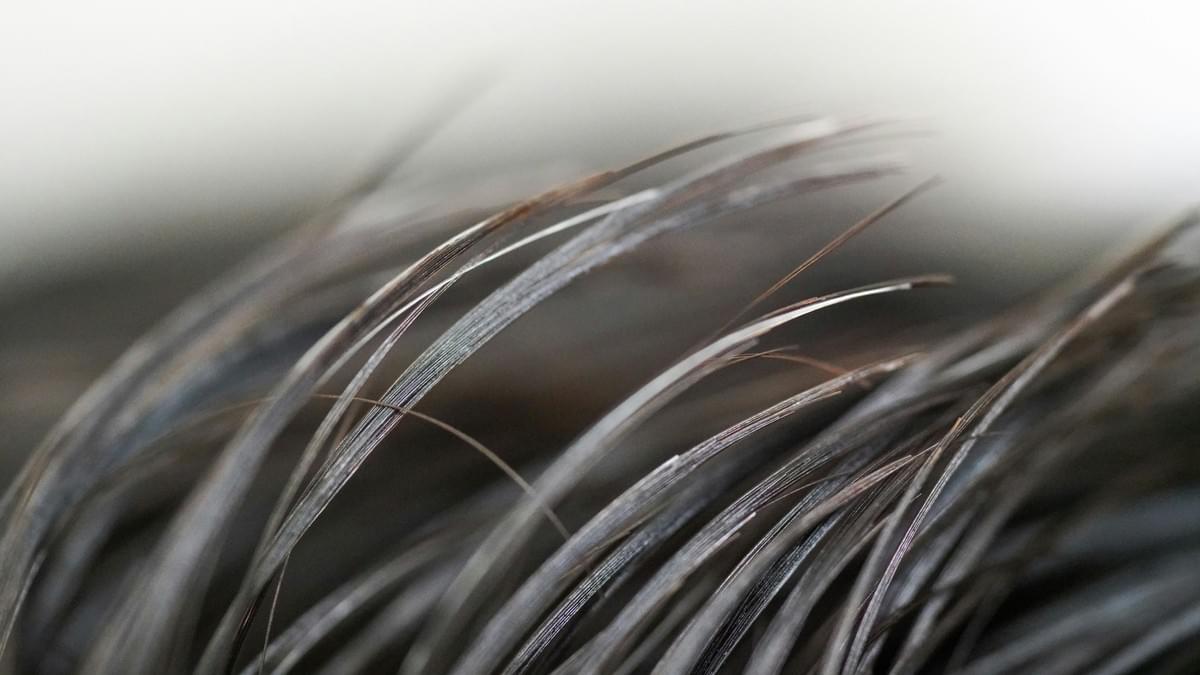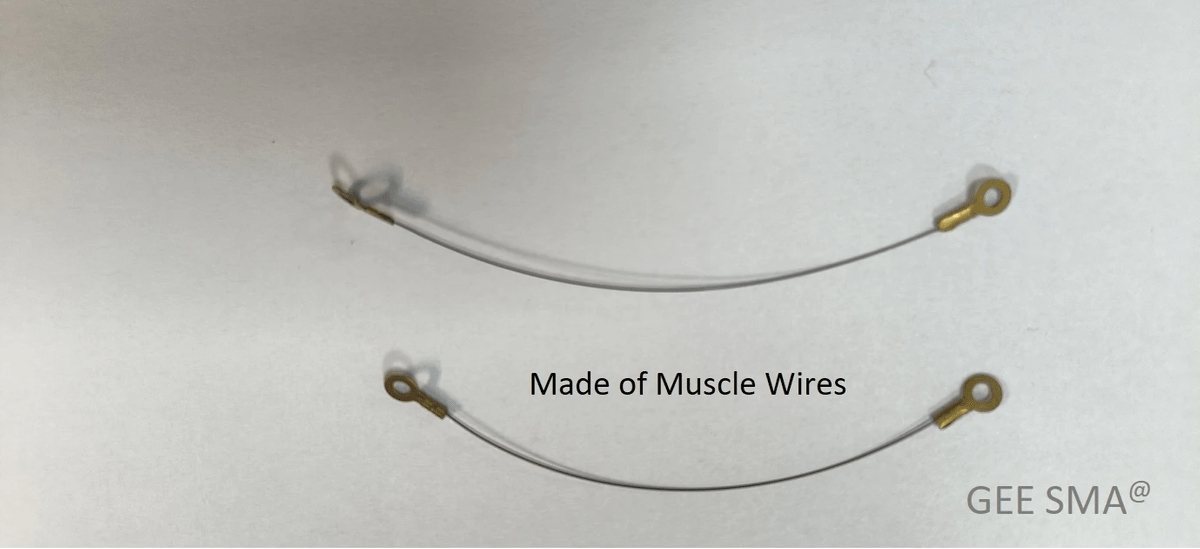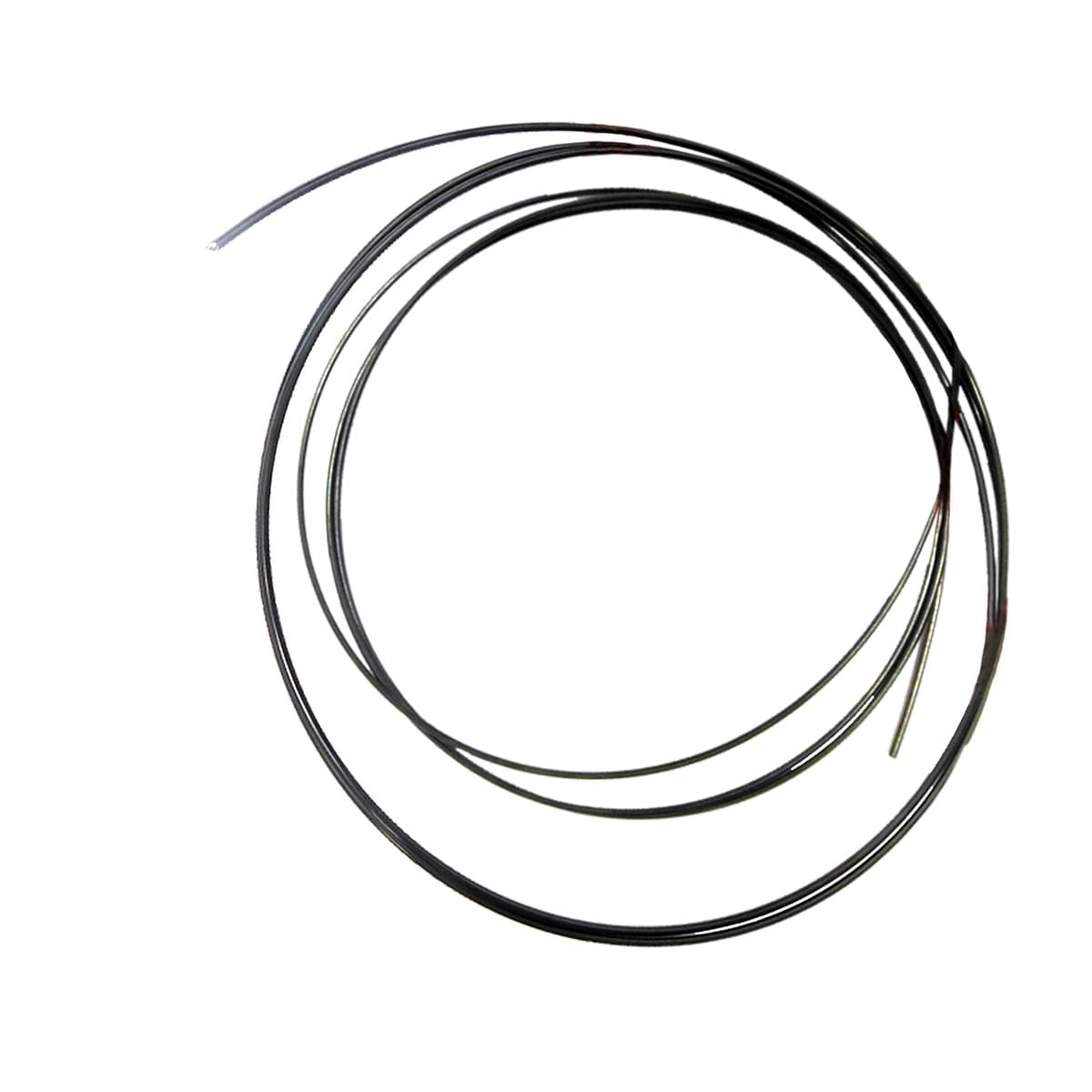Introduction

Niti wire for guide wire is a crucial component in various medical procedures, offering flexibility and durability for navigating through the body's intricate pathways. This versatile material plays a vital role in enhancing the performance of catheter guide wires, allowing for precise and effective navigation during medical interventions.
Understanding Niti Wire and Its Role in Medical Procedures
Niti wire, also known as nitinol wire, is a nickel-titanium alloy renowned for its shape memory and superelasticity properties, making it ideal for use in medical devices such as guide wires. Its ability to return to its original shape after deformation allows for seamless navigation through blood vessels and other anatomical structures, ensuring minimal trauma to the patient.
Exploring the Versatility of Niti Wires in Guidewire Applications
Niti wires are widely used in various medical specialties, including cardiology, neurology, and urology. They serve as essential components of catheter guide wires, enabling healthcare professionals to access challenging anatomical locations with precision and ease. The flexibility and kink resistance of Niti wires make them indispensable tools in minimally invasive procedures.
The Benefits of Using Niti Wire for Guidewire in Medical Procedures
The utilization of Niti wire for guide wire offers numerous benefits, including improved maneuverability within the body's intricate pathways, reduced risk of vessel damage or perforation, and enhanced patient comfort during procedures. These advantages contribute to more successful outcomes and shorter recovery times for patients.
What is a Niti Wire for Guide Wire?

Niti wire for guide wire is a specialized type of wire made from Nitinol, a nickel-titanium alloy known for its unique properties such as superelasticity and shape memory. This composition allows the Niti wire to be flexible and kink-resistant, making it ideal for navigating through complex anatomical pathways during medical procedures.
The Composition and Properties of Niti Wire for Guidewire
Niti wires are typically composed of approximately 50% nickel and 50% titanium, giving them their distinctive characteristics. These wires exhibit superelasticity, allowing them to return to their original shape even after being bent or stretched during use. Additionally, Niti wires possess shape memory, enabling them to revert to a predetermined shape when subjected to certain stimuli, such as temperature changes.
Moreover, the unique properties of Niti wires make them ideal for use in medical procedures such as angioplasty and endovascular surgery. Their superelasticity allows for easy navigation through blood vessels and other narrow passages without the risk of kinking or breaking. This flexibility and resilience contribute to the overall success and safety of these delicate procedures, ultimately benefiting patients by reducing the risk of complications.
The Role of Niti Wire in Enhancing Medical Procedures
Nitinol guidewires play a crucial role in enhancing medical procedures by providing physicians with a reliable tool for navigating through blood vessels, bile ducts, and other anatomical structures with precision and ease. Their flexibility and kink-resistance make them indispensable in various interventional procedures such as angioplasty, stent placement, embolization, and endovascular surgeries.
Nitinol guidewires are also widely used in neurovascular procedures, where their flexibility and shape memory allow for precise navigation through the intricate network of blood vessels in the brain. This is particularly important in the treatment of aneurysms and other cerebrovascular conditions, where the ability to maneuver through delicate and narrow pathways is essential for successful outcomes. Additionally, Niti wires have found applications in urology, gastroenterology, and pulmonary medicine, further highlighting their versatility and importance in enhancing medical procedures across various specialties.
Applications of Niti Wire in Various Medical Specialties
Nitinol guidewires find applications across a wide range of medical specialties including cardiology, radiology, gastroenterology, urology, and neurology. In cardiology, these wires are used for accessing coronary arteries during cardiac catheterization procedures. In radiology, they aid in the placement of drainage catheters or embolic coils. Similarly, they are utilized in urology for ureteral stent placement and stone retrieval.
In gastroenterology, Niti wires play a crucial role in endoscopic procedures such as ERCP (endoscopic retrograde cholangiopancreatography) for accessing the bile ducts and pancreatic ducts. These wires aid in the placement of stents to relieve obstructions and facilitate the drainage of fluids. Additionally, they are used for retrieving foreign bodies or performing biopsies in the gastrointestinal tract, providing valuable assistance to gastroenterologists in their diagnostic and therapeutic interventions.
A CoNiCr-Nitinol Composite Wire for Guidewire

A CoNiCr-Nitinol composite wire is a revolutionary advancement in medical technology, combining the unique properties of Cobalt, Nickel, Chromium, and Nitinol to create a highly durable and flexible wire for guidewire applications. This composite wire offers superior resistance to deformation and kinking, making it an ideal choice for intricate medical procedures.
Exploring the Unique Features of CoNiCr-Nitinol Composite Wire
The CoNiCr-Nitinol composite wire exhibits exceptional shape memory and superelasticity, allowing it to navigate through complex anatomical structures with ease. Its biocompatibility and radiopacity make it suitable for a wide range of medical procedures, ensuring accurate placement and reduced risk of adverse reactions.
The exceptional shape memory and superelasticity of the CoNiCr-Nitinol composite wire make it an ideal choice for guidewire applications in interventional cardiology and radiology. This unique feature allows the wire to easily navigate through tortuous vessels and tight anatomical structures, providing physicians with greater control and precision during procedures. Additionally, its biocompatibility ensures minimal tissue trauma, while its radiopacity enables clear visibility under fluoroscopy, reducing the risk of misplacement and complications.
Advantages of Using CoNiCr-Nitinol Composite Wire in Guidewire Applications
The use of CoNiCr-Nitinol composite wire in guidewire applications provides healthcare professionals with enhanced control and maneuverability during minimally invasive procedures. Its high tensile strength and corrosion resistance contribute to improved patient outcomes and reduced procedural complications.
Moreover, the use of CoNiCr-Nitinol composite wire in guidewire applications allows for smoother navigation through tortuous anatomy, reducing the risk of vessel trauma and perforation. This results in a more comfortable experience for the patient and decreases the likelihood of post-procedural complications. Additionally, the composite wire's radiopacity provides clear visibility under fluoroscopy, aiding healthcare professionals in accurately guiding the wire to its intended location.
Potential Medical Procedures Enhanced by CoNiCr-Nitinol Composite Wire
From neurovascular interventions to cardiovascular surgeries, the versatility of CoNiCr-Nitinol composite wire makes it an invaluable tool in various medical specialties. Its ability to cross boundaries within the body with precision and reliability has significantly expanded the scope of minimally invasive procedures.
The use of CoNiCr-Nitinol composite wire has also shown great potential in orthopedic surgeries, particularly in the field of arthroscopic procedures. Its flexibility and shape memory allow for precise navigation through joints and delicate tissues, making it an ideal tool for minimally invasive orthopedic interventions. This has led to reduced recovery times and improved patient outcomes, further solidifying the composite wire's role in enhancing medical procedures.
Nitinol Components, Guidewires & Accessories

The Role of Nitinol Components in Medical Devices
Nitinol components play a crucial role in the manufacturing of medical devices due to their unique properties such as superelasticity and shape memory. These components are widely used in catheters, stents, and guide wires for their flexibility, durability, and biocompatibility. Their ability to withstand complex procedures makes them indispensable in various medical specialties.
Advancements in Nitinol Guidewires and Accessories
Recent advancements in nitinol guidewires and accessories have revolutionized minimally invasive procedures by offering improved trackability, pushability, and torque response. These developments have led to the creation of more precise and reliable tools for navigating through intricate anatomical structures with enhanced control and maneuverability. As a result, medical professionals can perform complex interventions with greater ease and accuracy.
Impact of Nitinol Technology on Medical Procedures
The impact of nitinol technology on medical procedures has been profound, as it has enabled the development of advanced devices that can access challenging anatomical locations with minimal trauma to patients. The use of nitinol components, guidewires, and accessories has significantly expanded the scope of interventional procedures across various medical specialties, leading to improved patient outcomes and reduced recovery times.
The flexibility and shape memory of nitinol components have revolutionized the field of minimally invasive surgery, allowing for precise navigation through tortuous vessels and intricate anatomical structures. This has not only reduced the risk of complications during procedures but has also made it possible to treat patients who were previously deemed inoperable. Additionally, the use of nitinol guidewires has facilitated the delivery of therapeutic agents to targeted sites within the body, enabling more effective and personalized treatment strategies for patients with complex medical conditions.
Strategies for Optimal Use of Niti Wire in Guidewire Applications

Best Practices for Handling and Implementing Niti Wire in Medical Procedures
When using Niti wire for guide wire applications, it's crucial to ensure proper handling and implementation to maximize its benefits. This includes carefully following manufacturer guidelines for storage, handling, and usage to maintain the integrity of the wire. Additionally, healthcare professionals should undergo thorough training on the correct techniques for inserting and maneuvering the Niti wire during medical procedures to avoid any potential complications.
Addressing Potential Challenges and Limitations of Niti Wire in Guidewire Applications
While Niti wires are incredibly versatile and beneficial, it's important to acknowledge potential challenges and limitations in their use for guidewire applications. These may include issues such as kinking or buckling of the wire during insertion, as well as potential difficulties in navigating through complex anatomical structures. Addressing these challenges requires ongoing training, expertise, and a deep understanding of the unique properties of Niti wires to overcome any obstacles that may arise during medical procedures.
Maximizing the Potential of Niti Wire for Improved Patient Outcomes
To ensure improved patient outcomes when using Niti wire for guidewire applications, healthcare professionals must prioritize continuous learning and skill development in utilizing this innovative technology. By staying updated on best practices, advancements in Niti wire technology, and sharing experiences within medical communities, practitioners can collectively work towards maximizing the potential of Niti wires to enhance patient care and treatment outcomes.
Exploring the Future of Niti Wire in Medical Procedures

Niti wire for guide wire is at the forefront of medical advancements, with ongoing innovations and research driving its potential in various applications. From improved flexibility to enhanced durability, Niti wire technology continues to push the boundaries of medical procedures.
Innovations and Research Advancements in Niti Wire Technology
Innovations in Niti wire technology are revolutionizing medical procedures, with ongoing research focusing on enhancing its shape memory properties and biocompatibility. These advancements aim to further improve the performance and safety of Niti wires for guide wire, making them even more versatile across different medical specialties.
Potential Developments and Applications of Niti Wire in Medical Specialties
The potential developments and applications of Niti wire in medical specialties are vast, ranging from cardiology to neurology. With ongoing advancements in material science and engineering, Niti wires are being tailored to meet the specific needs of each specialty, paving the way for more precise and effective medical procedures.
Anticipated Impact of Niti Wire on the Future of Medical Procedures
The anticipated impact of Niti wire on the future of medical procedures is significant, as it continues to enable minimally invasive techniques and improve patient outcomes. As research progresses and new applications emerge, Niti wires are expected to play a pivotal role in shaping the future landscape of healthcare delivery.
Conclusion

Niti wire for guide wire has revolutionized medical procedures, offering enhanced flexibility and maneuverability. The versatility of Niti wires in guidewire applications has opened up new possibilities for various medical specialties, improving patient outcomes. Embracing the future of Niti wire technology in healthcare will lead to continued advancements and innovations in medical procedures.
Unleashing the Potential of Niti Wire for Enhanced Medical Procedures
The use of Niti wires for guide wires has unleashed the potential for enhanced medical procedures, allowing for smoother navigation through blood vessels and other anatomical structures. With its unique properties, Niti wire has become an indispensable tool in minimally invasive surgeries and diagnostic interventions, leading to improved patient care and recovery.
Harnessing the Versatility of Niti Wire in Guidewire Applications
Niti wires are used for a wide range of applications, including catheter guide wires that enable precise placement of catheters during medical procedures. These guide wires can effectively cross boundary wires, allowing physicians to access challenging anatomical areas with ease and accuracy. The versatility of Niti wire in guidewire applications continues to expand as new advancements are made in medical technology.
Embracing the Future of Niti Wire Technology in Healthcare
As we embrace the future of Niti wire technology in healthcare, we anticipate further developments and applications that will enhance medical specialties across the board. The use of CoNiCr-Nitinol composite wire for guidewire is just one example of how innovative materials are shaping the future of medical procedures. With ongoing research and advancements, we can expect Niti wire to play an even more significant role in improving patient care.

